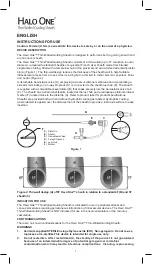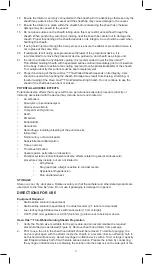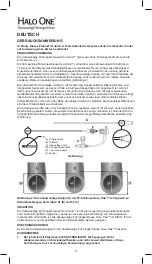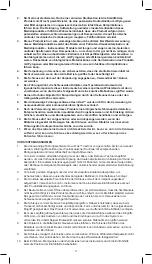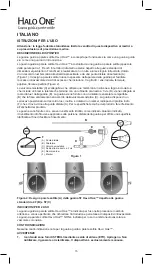
1
ENGLISH
INSTRUCTIONS FOR USE
Caution: Federal (U.S.A.) Law restricts this device to sale by or on the order of a physician.
DEVICE DESCRIPTION
The
Halo One™
Thin-Walled Guiding Sheath is designed to perform as both a guiding sheath and
an introducer sheath.
The
Halo One™
Thin-Walled Guiding Sheath consists of a thin-walled (up to 1F reduction in outer
diameter compared to standard sheaths of equivalent French size) sheath made from braided
single-lumen tubing, fitted with a female luer hub at the proximal end and a formed atraumatic distal
tip (A) (Figure 1). The thin-wall design reduces the thickness of the sheath wall to help facilitate
intravascular access from access sites including but not limited to radial, femoral, popliteal, tibial,
and pedal. (Figure 2).
A detachable hemostasis valve (C), employing a crosscut silicone membrane and incorporating a
side arm terminating in a 3-way stopcock (D), is connected to the sheath luer hub (E). The sheath
is supplied with a compatible vessel dilator (B) that snaps securely into the hemostasis valve hub
(C). The sheath has a strain relief feature located at the luer hub and a radiopaque platinum-iridium
marker (F) located close to the distal tip (A). Refer to product label for product specifications.
Sheaths are provided both with and without hydrophilic coating as labeled. Hydrophilic coating
where labeled is applied over the distal portion of the sheath to provide a lubricious surface to ease
insertion.
Figure 1
Figure 2: Thin-wall design (A) of 5F
Halo One™
sheath in relation to a standard 4F (B) and 5F
sheath (C)
INDICATION FOR USE
The
Halo One™
Thin-Walled Guiding Sheath is indicated for use in peripheral arterial and
venous procedures requiring percutaneous introduction of intravascular devices. The
Halo One™
Thin-Walled Guiding Sheath is NOT indicated for use in the neurovasculature or the coronary
vasculature.
CONTRAINDICATIONS
There are no known contraindications for the
Halo One™
Thin-Walled Guiding Sheath.
WARNINGS
1. Contents supplied STERILE using ethylene oxide (EtO). Non-pyrogenic. Do not re-use,
reprocess or re-sterilize.This device is intended for single use only.
2. Do not resterilize. After resterilization, the sterility of the product is not guaranteed
because of an indeterminable degree of potential pyrogenic or microbial
contamination which may lead to infectious complications. Cleaning, reprocessing
(A) Distal Tip
(B) Dilator
(C) Hemostasis Valve
(D) 3 way Stopcock
(E) Luer Hub
(F) Marker
A
B
C
D
E
F

